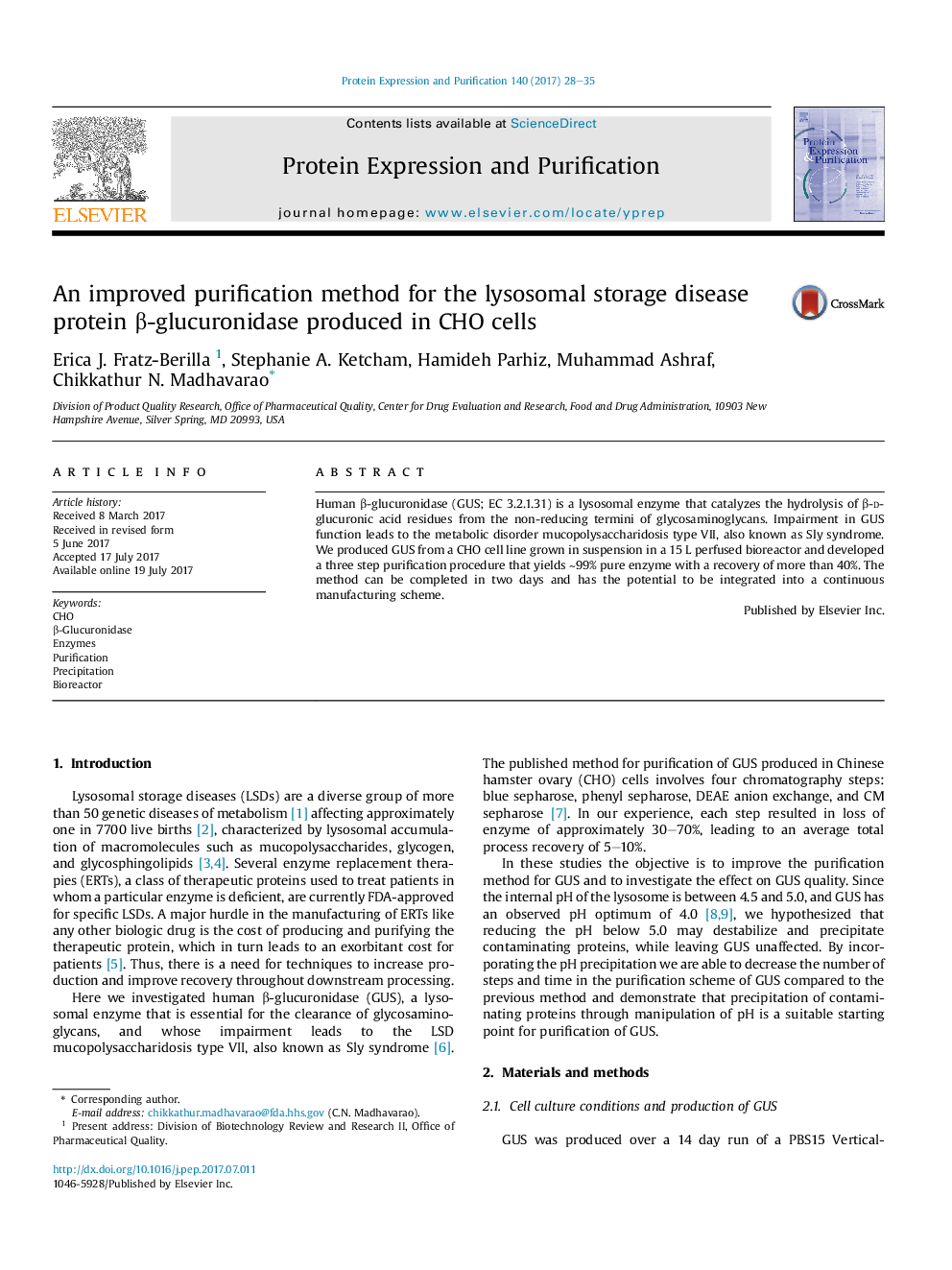| Article ID | Journal | Published Year | Pages | File Type |
|---|---|---|---|---|
| 5515984 | Protein Expression and Purification | 2017 | 8 Pages |
â¢Acid precipitation is applied to purification of lysosomal enzyme β-Glucuronidase produced by CHO cells in a bioreactor.â¢Purification efficiency improved by decreasing number of steps, time and improving recovery.â¢CE analysis showed decreased dimerization and similar isoelectric profile for β-Glucuronidase purified by new method.â¢New purification method does not affect the mannose-6-phosphate content of β-Glucuronidase.
Human β-glucuronidase (GUS; EC 3.2.1.31) is a lysosomal enzyme that catalyzes the hydrolysis of β-d-glucuronic acid residues from the non-reducing termini of glycosaminoglycans. Impairment in GUS function leads to the metabolic disorder mucopolysaccharidosis type VII, also known as Sly syndrome. We produced GUS from a CHO cell line grown in suspension in a 15 L perfused bioreactor and developed a three step purification procedure that yields â¼99% pure enzyme with a recovery of more than 40%. The method can be completed in two days and has the potential to be integrated into a continuous manufacturing scheme.
